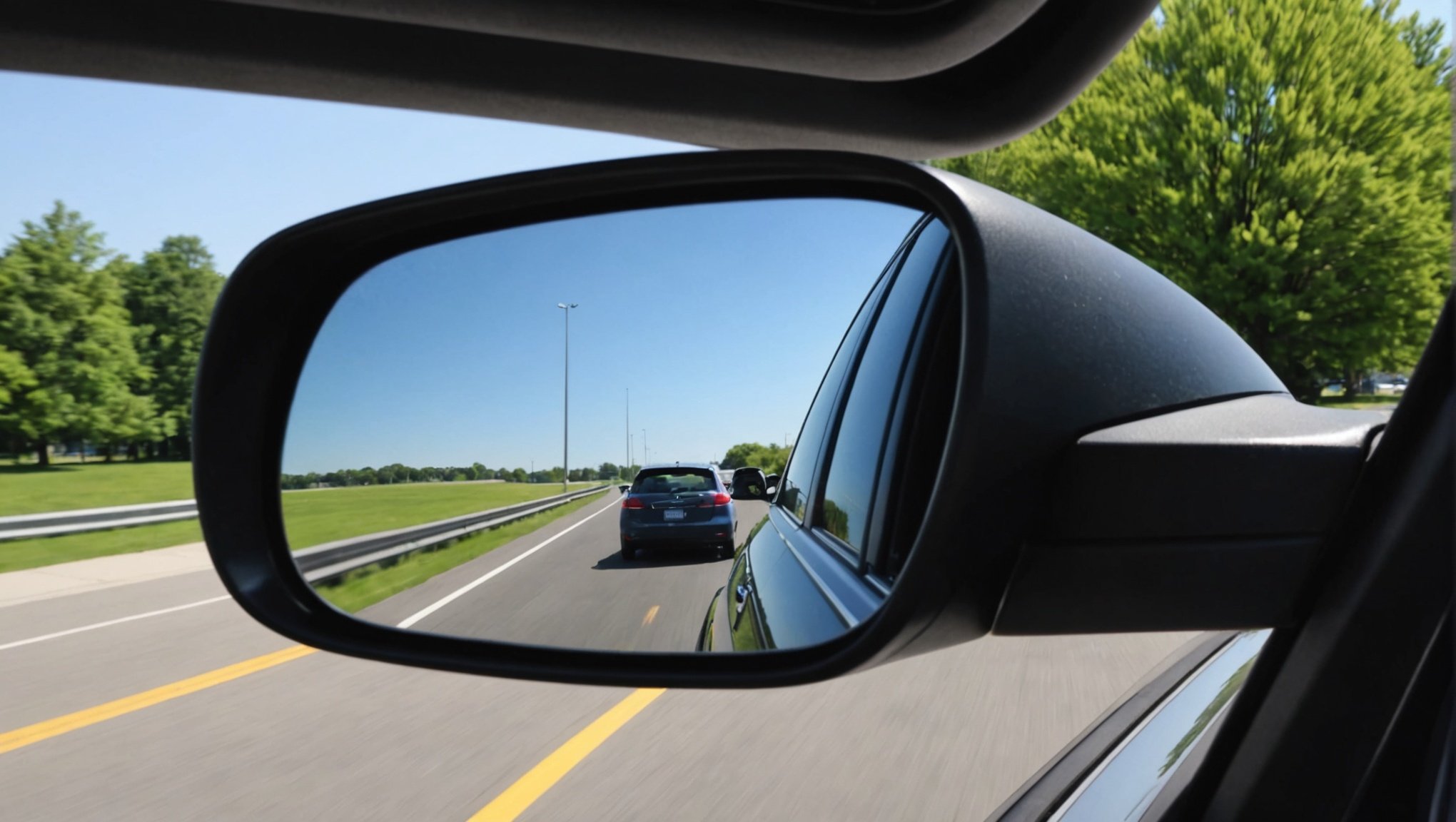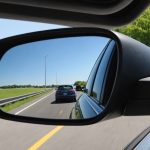Blind spots pose significant dangers while driving, especially in hatchbacks with smaller rear vantage points. Adjusting your side mirrors properly can enhance visibility and ensure safer journeys. With simple techniques, you can master these adjustments and eliminate those pesky blind spots. Discover effective tips that not only improve your driving confidence but also promote safety for you and your fellow road users. Take control of your hatchback’s visibility and enhance your driving experience today!
Understanding Blind Spots in Hatchbacks
Blind spots are areas around a vehicle that are not visible to the driver through the mirrors. In hatchbacks, these blind spots can significantly impact driving safety, as they may obscure other vehicles, pedestrians, or obstacles. Recognising the common blind spot locations is crucial for maintaining hatchback safety.
Have you seen this : Essential Guide to Safely Installing a Child Booster Seat in Your SUV
Typically, blind spots in hatchbacks are located at the rear corners and along the sides of the vehicle. The design of hatchbacks, with their sloping rear windows and wide pillars, can further exacerbate these blind spots. This makes it essential for drivers to be extra vigilant when merging or changing lanes.
Driving awareness is vital in mitigating the risks associated with blind spots. Drivers should frequently check their mirrors and turn their heads to ensure no hidden obstacles are present. Additionally, advanced features like blind spot monitoring systems can assist in enhancing safety by alerting drivers to unseen dangers.
Have you seen this : Mastering Spark Plug Replacement: A Safe Guide for Cars with Tight Engine Bays
Incorporating these practices into daily driving routines can greatly improve safety. By understanding and addressing blind spots, hatchback drivers can reduce the likelihood of accidents and ensure a smoother, safer driving experience. Maintaining a high level of awareness and caution is key to navigating the challenges posed by blind spots effectively.
Step-by-Step Guide to Adjusting Side Mirrors
Adjusting your side mirrors correctly is crucial for minimizing blind spots and enhancing driving safety. Proper mirror positioning ensures you have the best possible view of the road.
Preparing for Adjustments
Before adjusting your side mirrors, ensure your seat is in the correct position. Sit comfortably with your back against the seat and your hands on the steering wheel. This ensures that the mirrors are aligned with your natural driving posture. Checking mirror alignment regularly is important, especially after changing seat settings or if multiple drivers use the vehicle.
Adjusting the Side Mirrors
To minimize blind spots, adjust the side mirrors so you can barely see the side of your car. This position allows for maximum road visibility. For hatchbacks, angle the mirrors outward slightly more than you might in other vehicles to compensate for their design. This technique helps cover the areas typically obscured by the vehicle’s structure.
Final Checks
Once you've adjusted the mirrors, perform a final check to confirm visibility. Ensure there's a seamless transition between what you see in the side mirrors and the rearview mirror. While seated, make any necessary tweaks to ensure complete coverage. This step is vital to ensure that blind spots are minimized effectively.
Utilizing Visual Aids for Effective Adjustments
Visual aids are invaluable tools for mastering mirror adjustments in vehicles. They provide clear, visual representations that can simplify complex concepts and techniques.
The Role of Diagrams
Diagrams play a crucial part in understanding how to adjust side mirrors effectively. They offer a visual breakdown of the steps involved, highlighting the correct angles and positions. With diagrams, drivers can easily identify errors in their current setup and make necessary corrections.
Benefits of Instructional Videos
Instructional videos are another excellent resource for learning mirror adjustment techniques. These videos often include step-by-step guides, demonstrating the process in real-time. Watching a professional adjust mirrors can help drivers replicate the actions more accurately. The visual and auditory elements combined make it easier to grasp and retain the information.
Resources for Finding Reliable Visual Aids
To find reliable visual aids, consider resources like automotive websites, educational platforms, and car manufacturer guides. These sources often provide high-quality diagrams and instructional videos tailored to specific vehicle models. By utilizing these resources, drivers can ensure they are equipped with the best knowledge for safe and effective mirror adjustments.
Tips for Hatchback-Specific Mirror Adjustments
When it comes to hatchback adjustments, understanding the vehicle's unique features is essential for optimal mirror positioning. Hatchbacks often have sloping rear windows and wide pillars, which can obscure visibility. This makes it crucial to tailor mirror adjustments to the specific design characteristics of these vehicles.
Factors Affecting Mirror Placement
The unique features of hatchbacks, such as their compact size and design, influence how mirrors should be positioned. The rear window's angle and the width of the pillars can create larger blind spots compared to sedans. Therefore, it's important to adjust the mirrors in a way that compensates for these obstructions.
Recommendations for Hatchback Adjustments
To achieve optimal positioning, angle the side mirrors outward slightly more than usual. This helps in covering blind spots that are common in hatchbacks. Ensure that the mirrors provide a continuous view with minimal overlap between the side and rearview mirrors. This setup maximizes your field of vision.
Enhancing Visibility
Consider additional mirror options to further enhance visibility. Installing blind spot mirrors or using electronic blind spot monitoring systems can provide an extra layer of safety. These tools are particularly beneficial for hatchback drivers, helping to ensure a clearer, more comprehensive view of the road.
Common Mistakes in Side Mirror Adjustments
When adjusting side mirrors, drivers often encounter common mistakes that can compromise visibility and safety. Understanding these adjustment errors is crucial for effective troubleshooting and ensuring optimal mirror positioning.
Frequent Errors in Mirror Adjustments
One of the most prevalent mistakes is positioning the mirrors too close to the car, which limits the field of view and increases blind spots. Many drivers also fail to adjust mirrors after changing their seat position, leading to misalignment. Overlapping views between the side mirrors and rearview mirror can result in unnecessary blind spots, reducing overall road awareness.
Consequences of Improper Positioning
Improper mirror adjustments can significantly impact driving safety. Reduced visibility increases the risk of accidents, particularly during lane changes or merging. Drivers may also struggle to see pedestrians or cyclists, leading to potential hazards. Therefore, ensuring correct mirror placement is essential for maintaining a clear and comprehensive view of the road.
Troubleshooting Tips
To address these issues, start by adjusting the mirrors outward until the side of the car is barely visible. Regularly reassess mirror alignment, especially after seat adjustments. Ensure a seamless transition between the side mirrors and rearview mirror to minimize blind spots. By following these tips, drivers can effectively troubleshoot and rectify adjustment errors.
Broader Safety Driving Recommendations
Incorporating safe driving practices is crucial for all drivers, especially those navigating the unique challenges of hatchbacks. Regular mirror checks are essential while driving. They ensure that mirrors remain correctly aligned, providing optimal visibility and reducing blind spots. This habit can significantly enhance vehicle safety, particularly when changing lanes or merging.
Hatchback drivers should also consider additional safety tips tailored to their vehicle's design. Given the potential for larger blind spots, it's advisable to use blind spot mirrors or electronic monitoring systems. These tools can alert drivers to unseen obstacles, offering an extra layer of protection. Moreover, maintaining a safe distance from other vehicles and being mindful of speed limits are fundamental driving tips that contribute to overall road safety.
Encouraging a culture of safety and awareness on the road is vital. By promoting regular vehicle maintenance, including tire checks and brake inspections, drivers can prevent potential hazards. Additionally, staying informed about local traffic laws and participating in defensive driving courses can enhance one's ability to respond to unexpected situations. Emphasizing these practices fosters a safer driving environment, benefiting all road users.

















